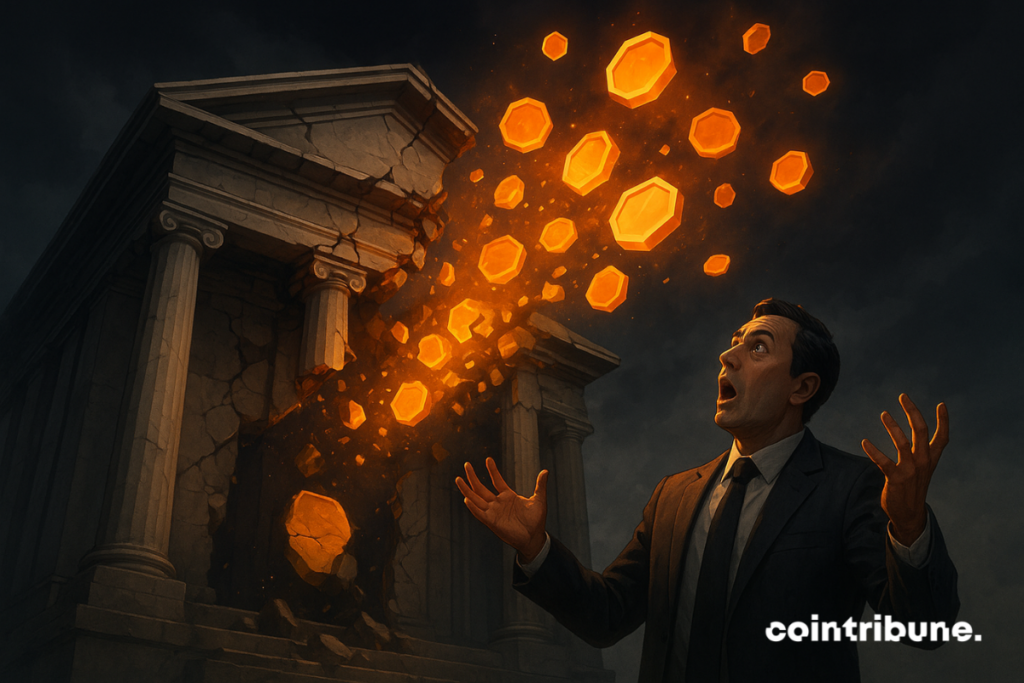RWA Tokenization Shatters Barriers: The Digital Revolution Reshaping Traditional Investment
Wall Street's ivory tower just got a digital makeover—and traditional finance will never be the same.
Real World Asset (RWA) tokenization slices through legacy systems, turning illiquid assets into tradable digital tokens. No more waiting months for settlement. No more exorbitant middlemen fees. Blockchain bypasses the old guard entirely.
How It Actually Works
Assets—real estate, commodities, even intellectual property—get mapped onto blockchain networks. Each token represents a fractional share, enabling micro-investing at scale. Smart contracts automate compliance, distribution, and ownership transfers. It’s finance, but faster, cheaper, and open to everyone.
Why It Matters Now
Institutions finally see the light. Tokenized RWAs hit record volumes this year, signaling a shift even your boomer portfolio manager can’t ignore. Global liquidity pools now access markets once reserved for the ultra-wealthy—all while traditional banks still debate whether to upgrade from fax machines.
The Bottom Line
RWA tokenization doesn’t just disrupt—it rebuilds. It democratizes access, injects transparency, and yeah, it makes a few finance bros sweat. The future of investing isn’t coming; it’s already trading 24/7.

In brief
- RWAs open decentralized finance to real assets like real estate, gold, or bonds.
- They offer liquidity, accessibility and diversification, but retain risks related to underlying assets.
- Tokenization prepares a convergence between traditional finance and blockchain.
What are RWAs and why now?
Real world assets (RWA) like ONDO or RealT are crypto tokens that represent physical assets in the real world. These assets can include bonds, real estate, commodities, and machinery. This tokenization transforms traditionally illiquid investments into digital assets tradable 24/7.
The sector is experiencing explosive growth: the market capitalization of tokenized real world assets has exceeded 18 billion dollars, the market reaching 22.6 billion dollars as of May 19, 2025. This expansion reflects growingand regulatory.
Acceleration factors in 2025
The industry is ready to mature in 2025, driven by regulatory clarity, interoperability, fractional ownership, digital identity, and liquidity solutions. The European regulationand national legislative initiatives provide a more stable legal framework.
In this innovation landscape,stands out as the first LAYER 1 blockchain fully dedicated to the tokenization of real assets. Unlike generalist blockchains, REAL integrates three types of business validators directly into its consensus layer:,, and. This unique architecture ensures that each step of an asset’s lifecycle is validated on-chain, from risk scoring by entities like Experian to insurance underwriting by companies.
Concrete use cases for individuals
Real estate accessible from 50 dollars
via RealT democratizes access to a sector historically reserved for large portfolios. Innovative platforms allow investment in American or European real estate with reduced entry tickets, offering estimated net annual returns between 9% and 11%.
: A French investor can own a fraction of an income property in Detroit thanks to solutions like RealT, receive weekly rents in cryptocurrencies, and resell their shares on a liquid secondary market.
Fractional commodities
Other examples include tokenization of precious artworks, where RWA NFTs represent ownership, or commodities like gold, where each token corresponds to a specific quantity of the asset. This approach allows investment in physical Gold without storage constraints.
Tokenized government bonds
Products of tokenized treasury bonds grew by 782% in 2023, now worth over 931 million dollars. Investors can thus access US bonds with theof blockchain: 24/7 transactions, fractionalization, and improved liquidity.
Opportunities for institutional investors
Portfolio diversification
RWAs offerwith traditional cryptocurrencies, enabling effective diversification. As a leader in decentralized private credit involving institutions, these solutions are gradually attracting traditional players.
Operational efficiency
Blockchain eliminates many intermediaries, reducing transaction costs and accelerating settlements.automate revenue distribution and property rights management.
Access to new markets
This process democratizes access to traditionally illiquid assets, opening them to a wider pool of investors. Institutions can thus offer innovative investment products to their clients.
Sectors in transformation
Tokenized private credit
Private credit represents a significant portion of this growth. Companies can issue tokenized bonds, enabling more flexible and transparent financing.
Art and collectibles
Tokenization of artworks allowsof prestigious assets. A master painting can be divided into thousands of tokens, making artistic investment accessible to the largest number.
Agriculture and natural resources
Farms, mines, or forests can be tokenized, offering direct exposure to commodities and income generated by these activities.
Challenges and risk considerations
Volatility of governance tokens
Despite growth of underlying assets, most RWA governance tokens showed negative returns between January 2024 and April 2025, mostly falling between -26% and -79%. This volatility highlights the importance of distinguishing performance of the asset from that of the associated token.
Persistent regulatory risks
While the framework improves, regulatory evolution remains a factor of uncertainty. Investors must monitor legislative changes in their jurisdiction.
Quality of underlying assets
Tokenization does not eliminate risks inherent to traditional assets: default, real estate depreciation, or commodity volatility remain present.
Emerging technologies and 2025 outlook
Next-generation infrastructures
Next-generation technologies: layer 3 rollups, zero-knowledge proofs, and reserve proofs promise speed, privacy, and trust. These technical innovations will improve user experience and security.
Cross-chain interoperability
Transparent cross-chain bridges and DeFi liquidity pools will unlock global trading opportunities. This interconnectivity will facilitate the FLOW of tokenized assets between different blockchains.
How to get started with RWAs?
Practical steps
Points of caution
- Check the transparency of underlying assets
- Ensure the liquidity of tokens
- Understand fees and governance structures
- Assess the financial strength of issuers
The future of RWAs: towards a hybrid finance
Tokenization of real world assets (RWA) is redefining traditional finance by unlocking liquidity, improving transparency, and transforming asset classes such as real estate, debt, and equities.
The RWA sector signals abetween traditional and decentralized finance. By 2030, Boston Consulting Group projects massive adoption of tokenization, fundamentally transforming asset management. This revolution is just beginning. Investors who understand these issues today are positioning themselves advantageously in tomorrow’s financial markets.
Maximize your Cointribune experience with our "Read to Earn" program! For every article you read, earn points and access exclusive rewards. Sign up now and start earning benefits.

